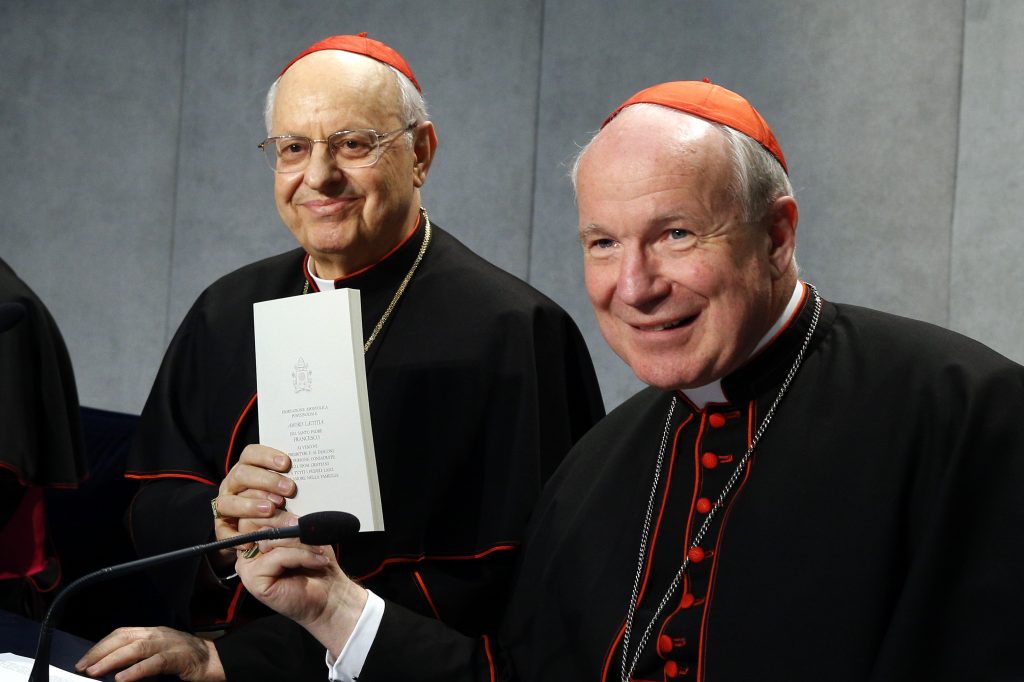
By Rachel Curry
It has been more than three months since the release of Amoris Laetitia yet, in a sign of the document’s significance for the Church, it continues to make headlines.
Pope Francis published his Apostolic Exhortation on marriage and family life on 8 April this year, concluding a three-year process that included two Synods of Bishops in 2014 and 2015.
Translated in English as The Joy of Love, the Apostolic Exhortation comprises 264 pages, 325 paragraphs and almost 400 footnotes.
However, in the days after its release, the media predictably focused on one small aspect; namely, whether divorced and remarried Catholics would be permitted to receive Holy Communion (and, on this point, Pope Francis’ language has been left open to interpretation).
Only now, with the passing of time, is the Church beginning to comprehend the full scope of Amoris Laetitia.
Austrian Cardinal Christoph Schönborn, whom the Holy Father chose to present the document to the press, recently spoke about its historical importance in an interview with Italian Jesuit journal, La Civiltà Cattolica.
”AL is an act of the magisterium that makes the teaching of the Church present and relevant today,” he said.
“Just as we read the Council of Nicaea in the light of the Council of Constantinople, and Vatican I in the light of Vatican II, so now we must read the previous statements of the magisterium about the family in the light of the contribution made by AL.”
Cardinal Schönborn praised the document for its easily understandable language and its “profound openness” to accept the reality of marriage and family life today.
With this, he said, Pope Francis had “fundamentally renewed the discourse of the Church”.
“We have sometimes spoken of marriage so abstractly that it loses its attractiveness. The Pope speaks very clearly: no family is a perfect reality, since it is made up of sinners. The family is ‘en route’. I believe this is the bedrock of the entire document,” he said.
Cardinal Schönborn strongly rejected the notion that a perspective so open to reality could do damage to the strength of Church doctrine.
“Francis perceives doctrine as the ‘today’ of the Word of God, the Word incarnate in history, and he communicates it while listening to the questions that arise ‘en route’,” he said.
“What he rejects is the perspective of a withdrawal to abstract pronouncements that are separated from the subject who lives and who bears witness to the encounter with the Lord that changes one’s life.”
Closer to home, the Diocese of Broken Bay has signalled the importance it places on Amoris Laetitia with the release of a discussion guide to help parishioners dissect its themes.
A statement from the Diocese explains that the document “marks a significant moment in the Church’s life, addressing both the hopes and challenges for family life in the 21st century”.
The discussion guide contains brief summaries of each of the nine chapters of the document and more than 60 questions and reflection points to guide discussion among couples, families, parishes, schools and small groups.
It also includes practical suggestions to help parishioners live out the vocations of marriage and family life in the spirit of Amoris Laetitia, key excerpts for use in parish bulletins and other material and helpful online links for further learning.
Such discussion guides are no doubt useful when attempting to understand such a rich document, especially when the Holy Father himself has requested that we read it slowly and carefully.
As Perth Archbishop Tim Costelloe SDB said upon its release, Amoris Laetitia does not represent an endpoint, but calls us all to a comprehensive fidelity to our faith.
“The Pope has indicated the path for us to follow. The journey has begun,” he said.
To download the Diocese of Broken Bay’s discussion guide, visit https://www.dbb.org.au/parish-support-unit/dsp-default.cfm?loadref=581.